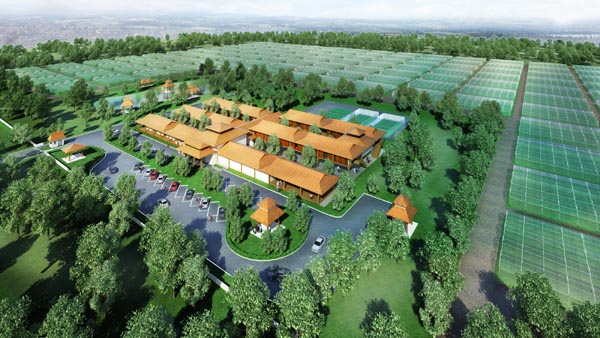A smart, self-sustaining eco-village in Malaysia may provide a global template for addressing rural poverty in a sustainable way.
Triple Pundit reports that the model eco-village of Rimbunan Kaseh features 100 affordable, energy-efficient homes across 12 hectares (29 acres). These homes encompass 100 square meters (around 1,000 square feet) and took just ten days to build. Constructed of reclaimed, post-consumer materials, each was constructed for between $16,000 and $20,000 USD.

Experts on sustainable development highlighted the project on July 17 of this year in San Jose, Calif., when members of the New York Academy of Sciences joined members of the Global Science and Innovation Advisory Council (GSIAC) in a meeting. On hand was the Malaysian Prime Minister’s Science Advisor speaking on behalf of GSIAC, a joint initiative between the Malaysia Industry-Government Group for High Technology (MIGHT) and the Academy.
One of the development’s most salient features is its four-level aquaculture system, described by GSIAC’s Dato’ Tan Say Jim as “a core facet” of the model community. At the top level of the system, water cascades through a series of tanks in which fish sensitive to water quality reside, before dropping down to the next level, where less-picky tilapia (“the world’s answer to affordable protein,” as he terms them) make their homes. On the levels below that, guppies and, lastly, algae are raised, providing food for the larger fish.
Wastewater from this aquaculture system is filtered, then used to irrigate trees, grain fields and other crops, which include flowers and fresh produce. But make no mistake, this is no archaic farming set up — plants here “are grown individually in novel hydroponic devices” called auto-pots, which consist of a three-piece plastic container that automatically detects soil moisture levels and waters plants precisely as required, reducing the need for costly fertilizers and pesticides, as well as water.
Organic waste is composted to encourage the growth of worms and other organisms, which go to feed free-range chickens (who also feed on home-grown grains). This closed-loop aquaculture-hydroponic farming system not only provides eco-village residents with a reliable supply of healthy food, it yields agricultural products that supplement their incomes by around $400-$650 per month.
Rooftpop solar photovoltaic systems cover the majority of the community’s electricity needs, with biomass and mini-hydro picking up the rest of the tab. Together, these renewable energy systems power (among other things) community-wide access to a 4G Internet service that provides e-learning and e-healthcare services.
More information on the community, which was developed by IRIS Corporation at the behest of GSIAC, is available online [PDF].